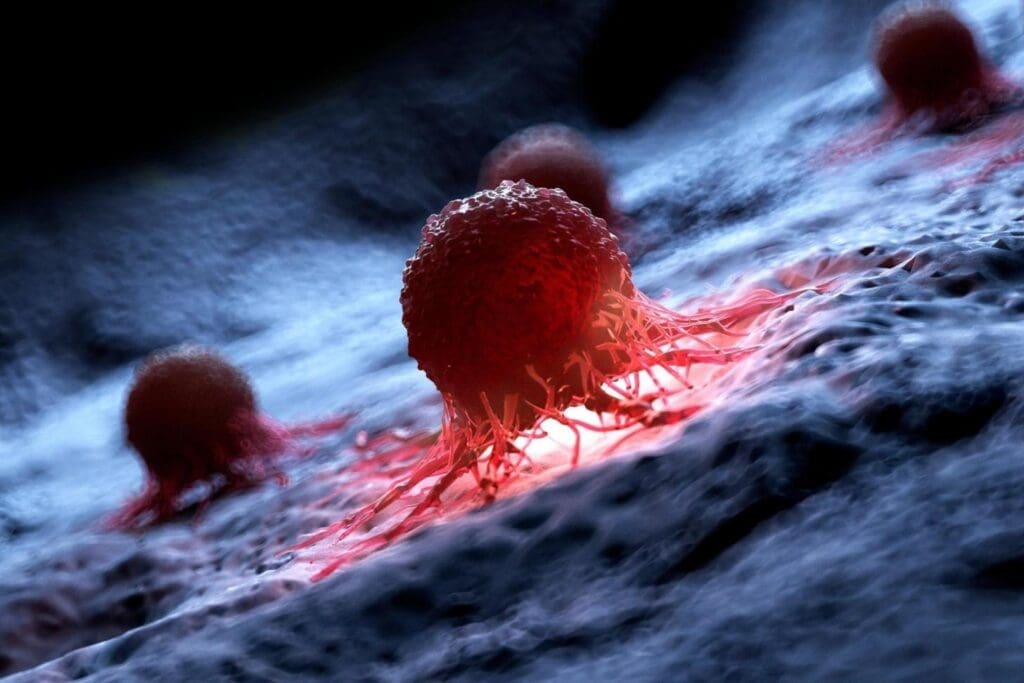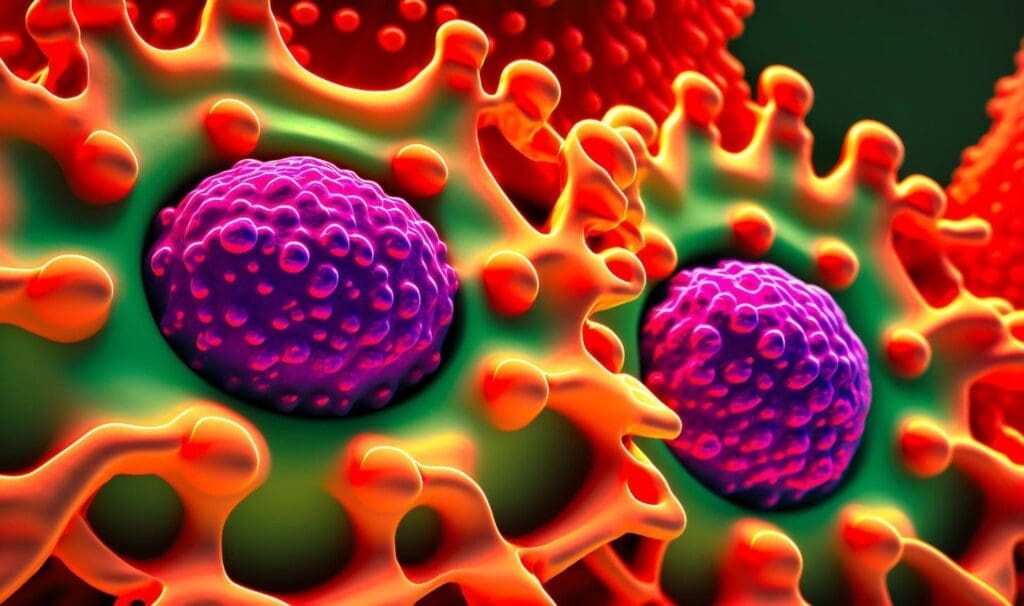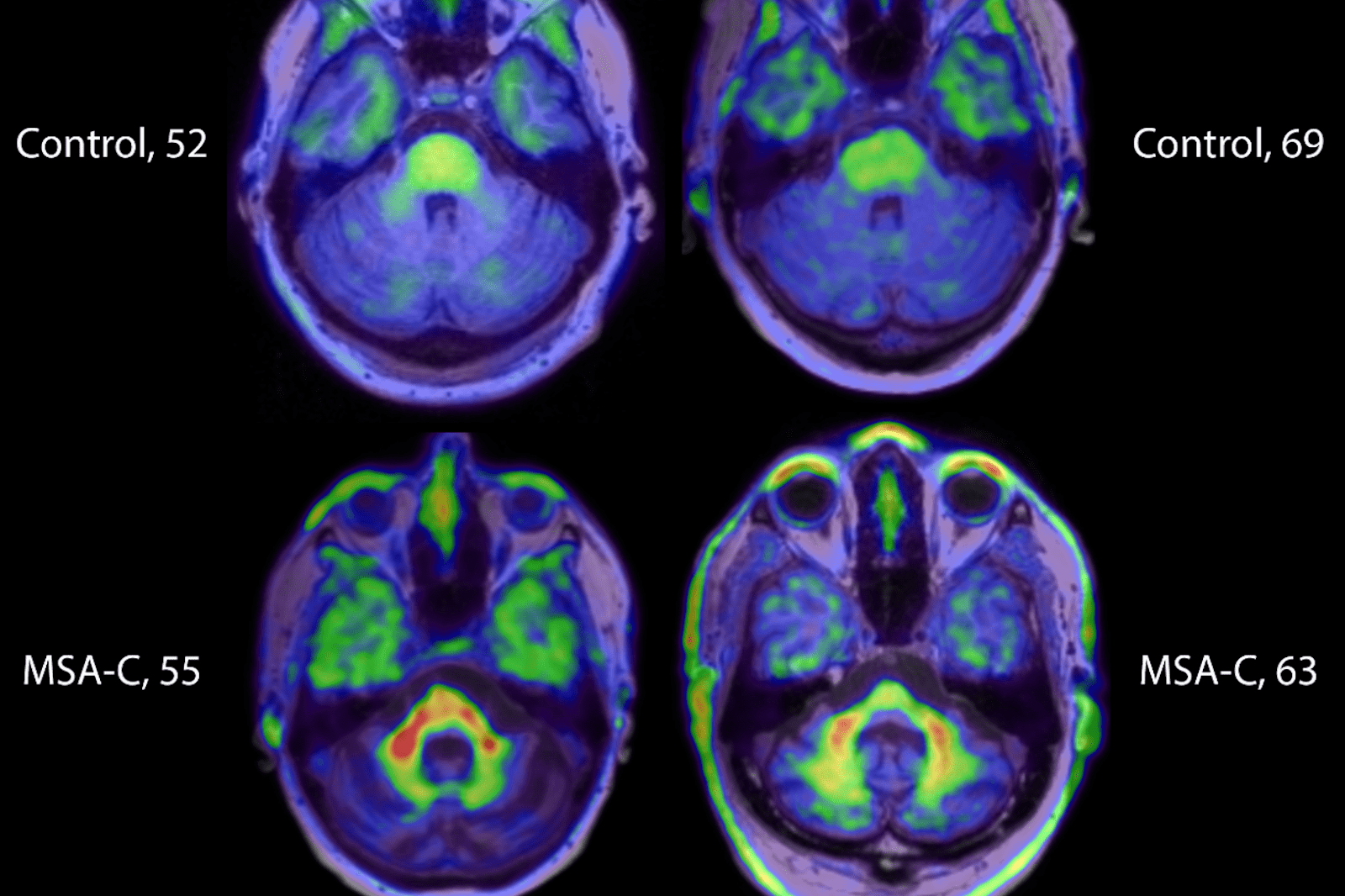Last Updated on November 26, 2025 by Bilal Hasdemir

Discovering an unusual lump or growth can be unsettling. It’s important to know if it’s a tumor, mass, or lesion. This knowledge is key for accurate diagnosis and peace of mind.
At Liv Hospital, we combine global medical expertise with a patient-centered approach. We ensure that every individual gets clear explanations and access to the latest diagnostic tools.
A tumor is an abnormal tissue growth. It can be either benign or malignant. On the other hand, a mass is a general term for any abnormal collection of tissue.
It’s vital to understand the differences between these terms. This is essential for proper diagnosis and treatment.
Key Takeaways
- Understanding the difference between a tumor and a mass is key for accurate diagnosis.
- A tumor is a specific type of abnormal tissue growth.
- A mass is a more general term for various types of abnormal tissue collections.
- Lesions and neoplasms are related terms that need clarification.
- Clear explanations and access to diagnostic tools are vital for patient care.
Understanding Medical Terminology for Abnormal Growths

Using medical terms correctly is key in healthcare, mainly when talking about tumors, masses, and lesions. Getting the diagnosis and treatment right depends on knowing and using these terms correctly.
Why Terminology Matters in Clinical Settings
In healthcare, knowing the difference between “tumor,” “mass,” and “lesion” is important. It affects how we care for patients. For example, a tumor is an abnormal tissue mass from too much cell division. Tumors can be harmless or dangerous.
A mass is a more general term for any lump or swelling, not always a tumor. It’s vital for doctors and patients to understand these terms well.
Research shows that accurate diagnosis and terms are key for good treatment plans. Misunderstandings can cause worry or delay treatment. The term “lesion” covers any tissue damage or change, like tumors or cysts. Knowing if a lesion is a tumor or not is important for the right treatment.
Common Misconceptions About Medical Terms
Many think “tumor,” “mass,” and “lesion” mean the same thing. But each term has its own meaning that affects diagnosis and treatment. For example, not every mass is a tumor, and not every lesion is a tumor either.
Medical experts say knowing what an abnormal growth is helps decide if it’s harmless or dangerous.
Healthcare providers must use exact words when talking to patients about their conditions. This helps manage worry and ensures patients follow their treatment plans. For instance, explaining the difference between a benign and malignant tumor helps patients understand their situation better.
In summary, knowing medical terms for abnormal growths is essential for both doctors and patients. Using the right terms and clearing up misunderstandings improves communication, lowers worry, and ensures patients get the right care for their needs.
What Is a Tumor? Comprehensive Definition

Tumors are abnormal tissue masses. They happen when cells divide too much or don’t die when they should. This basic idea helps us understand the big difference between benign and malignant tumors. Each type has its own health impact.
We will look at the traits of both benign and malignant tumors. We’ll use examples to show how they differ.
Benign Tumors: Characteristics and Examples
Benign tumors are not cancerous. They don’t spread or invade nearby tissues. They are usually not life-threatening but can cause issues based on where they are and how big they get. For example, a benign brain tumor can press on brain tissue, leading to symptoms.
Examples of benign tumors include:
- Lipomas (fatty tumors under the skin)
- Fibroids (benign tumors in the uterus)
- Osteomas (benign bone tumors)
Malignant Tumors: Characteristics and Examples
Malignant tumors, or cancers, can spread and invade tissues. They are life-threatening and need quick medical care.
Examples of malignant tumors include:
- Carcinomas (e.g., breast cancer, lung cancer)
- Sarcomas (cancers of connective tissue)
- Leukemias (blood cancers)
Knowing the difference between benign and malignant tumors is key. It helps decide the right treatment and outlook. Benign tumors might not need aggressive treatment. But malignant tumors often need a detailed plan, including surgery, chemo, and radiation.
What Is a Mass? Comprehensive Definition
A mass is an abnormal tissue collection found through physical exams or imaging. It covers a wide range of conditions, from harmless growths to dangerous tumors.
It’s important for both patients and doctors to know what a mass is. Not all masses are harmful or cancerous. They can be caused by inflammation, cysts, or tumors. The mass’s characteristics and context help determine its importance.
Types of Masses That Are Not Tumors
There are several types of masses that are not tumors. These include:
- Cysts: Fluid-filled sacs found in different body parts.
- Inflammatory masses: Tissue collections that get inflamed due to infection or other reasons.
- Abscesses: Pus-filled pockets caused by infection.
- Hematomas: Blood collections outside blood vessels, often from injury.
These masses can look like tumors but have different causes and characteristics.
When a Mass May Indicate a Serious Condition
While many masses are harmless, some can signal serious issues like cancer. Signs of a possible malignant mass include fast growth, irregular shape, and being stuck to nearby tissues.
Signs that a mass might be serious include:
- Rapid growth or size change.
- Irregular shape or borders.
- Being stuck to nearby tissues or structures.
- Associated symptoms like pain, weight loss, or feeling unwell.
Doctors look at these signs to decide what to do next. This might include more tests or a biopsy.
Tumor Versus Mass: Key Differences Explained
We often hear “tumor” and “mass” in medical talks. They seem similar but mean different things in health care. Knowing these differences helps doctors diagnose and treat patients better.
Cellular Composition Differences
A tumor grows from abnormal cells, which can be non-cancerous or cancerous. Non-cancerous tumors don’t spread or invade tissues. But cancerous tumors can spread and harm nearby tissues.
A mass, on the other hand, is a lump or swelling. It can be from infections, inflammation, or cysts. The cells in a mass can be different based on its cause.
Growth Pattern Distinctions
Tumors, mainly the cancerous ones, grow by invading tissues. Even non-cancerous tumors can cause problems because of their size or where they are.
Masses can grow or not, depending on their cause. For example, an inflammation-caused mass might go away with treatment. But a mass from a cyst or benign growth might stay until treated.
Clinical Significance of Each Term
Telling tumors from masses is key for treatment. Finding a cancerous tumor means starting a detailed treatment plan. But managing a mass depends on its cause and might involve treating an infection or removing it surgically.
Knowing the difference between a tumor and a mass is vital for good care. It helps doctors give the right treatment and improve patient results. Using the right medical terms is the base of good health care.
Understanding Lesions in Medical Context
Lesions are changes in tissue that can happen for many reasons. These include injury, infection, or disease. The term ‘lesion’ means any tissue area that’s been damaged or changed. Knowing about lesions helps doctors make the right diagnosis and treatment plan.
Types of Lesions and Their Characteristics
Lesions can be different based on their cause, behavior, and how they look under a microscope. They can be benign, meaning they’re not dangerous, or malignant, which means they’re cancerous. Benign lesions are usually not serious and include things like cysts or benign tumors. Malignant lesions, on the other hand, can spread and grow in other parts of the body.
Lesions can show up in many ways. Some are found by accident during tests or scans. Others might cause pain or make it hard to move, depending on where they are and how big they are.
Differentiating Lesions from Tumors and Masses
The terms ‘lesion,’ ‘tumor,’ and ‘mass’ are often mixed up, but they mean different things. A tumor is a growth of tissue, which can be harmless or cancerous. A mass is a lump or swelling that can be felt or seen on scans.
A lesion is a more general term for any abnormal tissue area. It doesn’t always mean a tumor or mass. Lesions can come from many causes, like inflammation or injury. It’s important to know the difference for the right treatment.
In real-world medicine, figuring out if something is a lesion, tumor, or mass takes a few steps. Doctors use tests, scans, and sometimes biopsies to make a correct diagnosis. Getting the diagnosis right is key to choosing the right treatment and knowing what to expect.
Neoplasms: Definition and Relationship to Tumors
Understanding neoplasms is key to grasping many medical conditions, like tumors and abnormal growths. We’ll look into what neoplasms are, how they’re classified, and their link to tumors. This will clear up any confusion around these terms.
Classification of Neoplasms
Neoplasms fall into two main types: benign and malignant. Benign neoplasms are not cancerous. They don’t spread or invade nearby tissues. They’re usually not dangerous but can cause issues due to size or location.
Malignant neoplasms, on the other hand, are cancerous. They can spread and invade other tissues, posing a serious health risk.
Distinguishing Between Neoplasms and Other Growths
Telling neoplasms apart from other growths, like cysts or inflammatory masses, is vital. Neoplasms come from abnormal cell growth. They grow on their own, unlike other growths caused by injury or inflammation.
Knowing the difference helps doctors diagnose and treat patients better.
In medical practice, it’s important to correctly identify and classify neoplasms. We use tools like imaging and histopathology to do this. This helps us treat patients effectively.
Diagnostic Approaches to Abnormal Growths
Diagnosing abnormal growths needs a mix of methods. We’ll look at how these techniques help find and treat growths accurately.
Imaging Techniques for Masses and Tumors
Imaging is key in finding abnormal growths. It lets doctors see the size, where, and what these growths are like. The main imaging tools are:
- X-rays: Good for first checks, mainly for bone issues.
- Computed Tomography (CT) scans: Show detailed pictures of growths.
- Magnetic Resonance Imaging (MRI): Gives clear pictures of soft tissues, helping with tumor and mass details.
Biopsy and Histopathological Examination
Imaging gives clues, but a biopsy is needed for a sure diagnosis. A biopsy takes tissue from the growth for a microscope check.
This check is key for:
- Seeing what cells the growth is made of.
- Telling if it’s cancer or not.
- Deciding the best treatment based on the growth’s details.
Laboratory Tests and Biomarkers
Laboratory tests are also important in diagnosing and managing growths. These tests include:
- Blood tests: Look for biomarkers of certain tumors or masses.
- Molecular diagnostics: Find genetic changes that affect treatment.
These tests help check the patient’s health and how well they’re doing with treatment.
Statistical Prevalence: Benign Versus Malignant Growths
Knowing how common benign and malignant growths are helps a lot. It’s key for doctors and patients. It aids in figuring out what’s wrong, how to treat it, and how to care for the patient.
Epidemiology of Common Benign Masses
Benign masses are quite common and can pop up anywhere in the body. They are usually not cancerous and might not need serious treatment. Examples include lipomas, cysts, and fibroadenomas. They are more common than cancerous tumors.
Lipomas are very common soft tissue tumors that grow more with age. Cysts can show up in the skin, ovaries, and kidneys. Fibroadenomas are common in young women’s breasts.
Incidence Rates of Malignant Tumors
Malignant tumors, or cancer, are serious and can be deadly if not caught and treated fast. How common they are depends on the type, where you live, and who you are.
The top cancers worldwide are breast, lung, colon, prostate, and skin cancer. Their rates change based on age, gender, lifestyle, and genes.
| Type of Growth | Prevalence | Common Locations |
| Benign Masses | High | Skin, breast, soft tissues |
| Malignant Tumors | Variable, generally lower than benign masses | Breast, lung, colon, prostate, skin |
It’s vital for doctors to know how common benign and malignant growths are. This knowledge helps them plan better treatments. It also helps patients understand their conditions and what to do next.
Clinical Management Based on Growth Classification
It’s key to know if a growth is benign or malignant to choose the right treatment. This helps doctors pick the best plan for each patient. It also improves how well patients do.
Treatment Approaches for Benign Growths
Benign growths usually don’t need a lot of treatment unless they bother you or look bad. Watchful waiting is often the first step. This means keeping an eye on the growth to see if it changes.
If a benign growth is causing problems, surgical removal might be needed. For example, if a lipoma or uterine fibroid is bothering you, it might be removed.
Treatment Approaches for Malignant Tumors
Malignant tumors need more serious treatment because they are cancer. The main treatments are surgery, chemotherapy, and radiation therapy. These are used alone or together, based on the tumor’s type and stage.
For example, early breast cancer might get a lumpectomy and then radiation. But more advanced cancer might need chemotherapy too. The treatment plan is made just for you, considering your health and what you want.
| Treatment Modality | Benign Growths | Malignant Tumors |
| Surgery | May be considered for symptomatic or problematic growths | Often used to remove tumors, potentially with margin removal |
| Chemotherapy | Not typically used | Used to kill cancer cells, often in combination with other treatments |
| Radiation Therapy | Rarely used | Used to kill cancer cells, can be external or internal |
Follow-up and Monitoring Protocols
It’s important to follow up and monitor growths, whether they’re benign or malignant. For benign growths, regular check-ups help catch any changes. For cancer, follow-up care is key to watch for recurrence and manage side effects.
Following up as planned is vital for the best patient outcomes. It’s not just about watching for changes. It’s also about dealing with any new symptoms or concerns.
When to Seek Medical Attention for Abnormal Growths
Spotting serious health issues often begins with noticing warning signs. Abnormal growths, like tumors or masses, worry many people. Knowing when to see a doctor is key for quick action and the best treatment.
Warning Signs That Shouldn’t Be Ignored
Some signs of abnormal growths mean you should see a doctor. These include:
- Rapid growth or changes in size
- Pain or discomfort associated with the growth
- Changes in texture or appearance
- Unusual symptoms such as bleeding or discharge
If you see any of these signs, don’t hesitate to visit a healthcare provider. Experts say early detection is vital for treating many conditions, including cancer.
Questions to Ask Your Healthcare Provider
When talking to a doctor about an abnormal growth, having questions ready is helpful. Ask:
| Question | Purpose |
| What is the likely cause of this growth? | Understanding the diagnosis |
| Are there any additional tests required? | Knowing what to expect in the diagnostic process |
| What are the available treatment options? | Exploring possible treatments |
Being informed and proactive about your health is important. Always talk to a healthcare professional for advice and care tailored to you.
Conclusion
It’s important for patients to know the difference between tumors, masses, lesions, and neoplasms. This knowledge helps them understand their health better. It also helps them make sense of their treatment plans.
A tumor and a mass are both abnormal growths, but they are different. Tumors grow from abnormal cells that keep multiplying. Masses, on the other hand, can be caused by inflammation or infection.
Understanding lesions and tumors is key. Lesions are any abnormal tissue areas. This can include tumors, masses, or other damage. Knowing this helps doctors create better treatment plans.
Patients who understand these terms can talk better with their doctors. They can ask smarter questions and make better choices about their health. This makes them more involved in their care.
FAQ
What’s the difference between a tumor and a lesion?
A tumor is a specific abnormal growth that can be either benign or malignant. On the other hand, a lesion is a broader term. It refers to any abnormal change in tissue, which may or may not be a tumor.
Is a lesion the same as a tumor?
No, a lesion is not the same as a tumor. While all tumors are lesions, not all lesions are tumors. Lesions can come from injuries, infections, or tumors.
What’s the difference between a mass and a tumor?
A mass is a general term for a lump or swelling. It can be caused by many things, including tumors. A tumor, though, is a specific type of mass. It results from abnormal cell growth.
Are lesions and tumors the same?
No, lesions and tumors are not the same. Tumors are a type of lesion with abnormal cell growth. But, lesions can also come from other causes.
What is a neoplasm?
A neoplasm is an abnormal growth of tissue. It can be benign or malignant. Neoplasms are often called tumors, but technically, they refer to the process of abnormal cell growth.
How are neoplasms classified?
Neoplasms are classified into two types: benign and malignant. Benign neoplasms are non-cancerous. Malignant neoplasms are cancerous.
What’s the difference between a benign tumor and a malignant tumor?
Benign tumors are non-cancerous. They don’t invade surrounding tissues or spread to other parts of the body. Malignant tumors, on the other hand, are cancerous. They can invade surrounding tissues and spread to other parts of the body.
How are abnormal growths diagnosed?
Abnormal growths are diagnosed using imaging techniques like X-rays, CT scans, or MRI. They also use biopsy and laboratory tests. These include histopathological examination and biomarker analysis.
When should I seek medical attention for an abnormal growth?
You should seek medical attention for a new or changing lump, swelling, or abnormal growth. This is true if it’s painful, growing rapidly, or if you have other symptoms like fever or weight loss.
What questions should I ask my healthcare provider about an abnormal growth?
Ask your healthcare provider about the nature of the growth and the diagnostic tests needed. Also, ask about the causes, treatment options, and follow-up protocols. This ensures you understand your condition and the best course of action.
References:
• National Cancer Institute. (n.d.). Cancer terms – SEER training modules. https://training.seer.cancer.gov/disease/cancer/terms.html






